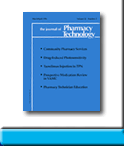 |
 |
Amlodipine-Induced Gingival Hyperplasia in a Child:
Case Report and a Review of the Literature
Nazia Ahmad, Jacquline Mullakary, and Gladys M El-Chaar
To request full article click here.
Objective: To increase awareness of amlodipine-induced gingival hyperplasia in children, as well as review whether a dose-related relationship exists.
Case Summary: A 9-year-old girl with a past medical history of membranous nephropathy and hypertension presented with failure to thrive and inability to gain weight. She had a history of allergy to enalapril. On admission, she was found to have gingival hyperplasia. A review of her medication profile found amlodipine and azathioprine to be possible agents for this adverse reaction. The child’s mother noticed this adverse effect after an increase in amlodipine dosage. We recommended substituting the angiotensin receptor blocker losartan for amlodipine; however, the nephrologist feared a cross-reactivity with enalapril and decided to continue amlodipine therapy. A follow-up call after hospital discharge revealed that the patient could no longer eat by mouth and that her gums bled upon brushing.
Discussion: We reviewed the possible role of azathioprine in causing our patient’s gingival hyperplasia. Due to the timeliness of this occurrence and the possibility of a dose-related response, we selectively reviewed the literature associated with amlodipine in children. A PubMed search and subsequent review of the literature revealed 1 study in rats that showed a relationship between amlodipine dose/plasma concentration and gingival hyperplasia. In humans, this relationship was reported with other calcium channel blockers, but not with amlodipine and not in a child. The Naranjo probability scale revealed a possible adverse reaction of gingival hyperplasia associated with amlodipine.
CONCLUSIONS: To our knowledge, this is the first report of a possible dose-related occurrence of gingival hyperplasia in a child receiving amlodipine.
J Pharm Technol 2011;27:158-63.
To request full article click here.
|
|
|
||
|

